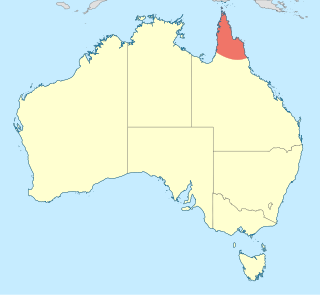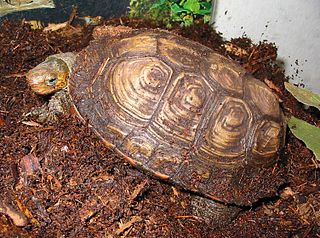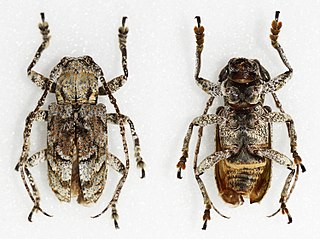Related Research Articles

The poinsettia is a commercially important plant species of the diverse spurge family (Euphorbiaceae). Indigenous to Mexico and Central America, the poinsettia was first described by Europeans in 1834. It is particularly well known for its red and green foliage and is widely used in Christmas floral displays. It derives its common English name from Joel Roberts Poinsett, the first United States Minister to Mexico, who is credited with introducing the plant to the US in the 1820s. Poinsettias are shrubs or small trees, with heights of 0.6–4 m (2.0–13.1 ft). Though often stated to be highly toxic, the poinsettia is not dangerous to pets or children. Exposure to the plant, even consumption, most often results in no effect, though it can cause nausea, vomiting, or diarrhea.

Caesalpinia pulcherrima is a species of flowering plant in the pea family Fabaceae, native to the tropics and subtropics of the Americas. It could be native to the West Indies, but its exact origin is unknown due to widespread cultivation. Common names for this species include poinciana, peacock flower, red bird of paradise, Mexican bird of paradise, dwarf poinciana, pride of Barbados, flos pavonis, and flamboyant-de-jardin. The Hawaiian name for this plant is ʻohai aliʻi.

The emerald green snail, green tree snail, or Manus green tree snail, scientific name Papustyla pulcherrima, sometimes listed as Papuina pulcherrima, is a species of large, air-breathing tree snail, a terrestrial pulmonate gastropod mollusk in the family Camaenidae.

Petalura pulcherrima is a species of Australian dragonfly in the family Petaluridae, commonly known as a beautiful petaltail. It is a very large and slender dragonfly, mostly black or dark brown with yellow markings and its eyes widely separated on top of its head. It has clear wings and a very long, narrow pterostigma.
Ipomoea pulcherrima is a species of plant in the family Convolvulaceae. It is endemic to Peru.

Phalaenopsis pulcherrima is a species of orchid found from Hainan Island to western Malesia.

The ornate or painted wood turtle is one of nine turtle species of the genus Rhinoclemmys of the family Geoemydidae. There are four recognized subspecies.

Rhytiphora is a genus of longhorn beetles of the subfamily Lamiinae, containing the following species:
Antennaria pulchella is a North American species of flowering plants in the daisy family known by the common names showy pussytoes and handsome pussytoes. It is widespread across much of Canada including the three Arctic Territories, as well as in parts of the United States.
Metschnikowia pulcherrima is a ubiquitous species of yeast, with numerous strains, belonging to the family Metschnikowiaceae, and found on grapes, cherries, flowers, spoiled fruit and consequently carried by fruit flies. It is a non-Saccharomyces yeast and plays an important role in the vinification of wine when it is present on grapes or winery equipment, and has historically seen use in South Africa’s wine industry. It is also being studied at the University of Bath as a possible alternative to the use of Palm oil, and early results show promise. M. pulcherrima is ovoid to ellipsoidal in shape and reproduces by budding. Its cells are globose and thick-walled, holding a single, large oil droplet of high refractive index. As the result of incomplete budding where cells remain attached after division, pseudohyphae may form under anaerobic conditions.
Rhytiphora transversesulcata is a species of beetle in the family Cerambycidae. It was described by Stephan von Breuning in 1938. It is known from Australia.
Rhytiphora frenchiana is a species of beetle in the family Cerambycidae. It was described by Stephan von Breuning in 1961. It is known from Australia.
Rhytiphora decipiens is a species of beetle in the family Cerambycidae. It was described by Francis Polkinghorne Pascoe in 1863. It is known from Australia.
Rhytiphora fumata is a species of beetle in the family Cerambycidae. It was described by Francis Polkinghorne Pascoe in 1863. It is known from Australia.
Rhytiphora neglecta is a species of beetle in the family Cerambycidae. It was described by Francis Polkinghorne Pascoe in 1863, originally under the genus Symphyletes. It is known from Australia. It feeds on Acacia longifolia.
Rhytiphora cinnamomea is a species of beetle in the family Cerambycidae. It was described by Francis Polkinghorne Pascoe in 1859. It is known from Australia.

Rhytiphora maculicornis is a species of beetle in the family Cerambycidae. It was described by Francis Polkinghorne Pascoe in 1858. It is from Australia.
Rhytiphora frenchi is a species of beetle in the family Cerambycidae. It was described by Thomas Blackburn in 1890, originally under the genus Symphyletes. It is known from Australia.
Rhytiphora albocincta is a species of beetle in the family Cerambycidae. It was described by Félix Édouard Guérin-Méneville in 1831, originally under the genus Saperda. It is known from Australia. It feeds on Acacia pubescens and Acacia longifolia. It contains the variety Rhytiphora albocincta var. compos.

Rhytiphora pulverulea is a species of beetle in the family Cerambycidae. It was described by Jean Baptiste Boisduval in 1835. It is known from Australia.
References
- ↑ BioLib.cz - Rhytiphora pulcherrima. Retrieved on 8 September 2014.